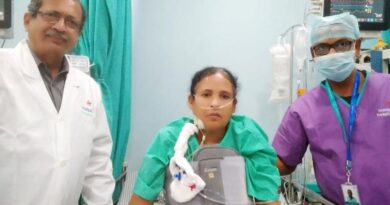Can smartwatches identify heart failure risk factors and irregular heartbeats?
According to a peer-reviewed study published in The European Heart Journal — Digital Health, wearable technology like smartwatches could be used to identify people who are more likely to get heart failure and irregular heartbeats later in life. It examined data from 83,000 individuals who had undergone a 15-second electrocardiogram (ECG) similar to those done on phones and smartwatches.
The researchers discovered ECG records with additional heartbeats, which are often benign but can be indicative of cardiac failure and arrhythmia (irregular heartbeats) if they happen frequently. They discovered that individuals who had an additional beat in this brief recording (one in 25 of the total) had a twofold increased chance of having heart failure or an irregular heartbeat (atrial fibrillation) over the next 10 years. People between the ages of 50 and 70 whose ECG records were evaluated at the time had no known cardiovascular illness.
What is cardiac failure, then? It occurs when the heart’s pumping power is compromised. Atrial fibrillation is characterised by an irregular and frequently abnormally high heart rhythm brought on by the sudden onset of aberrant electrical impulses in the top chambers of the heart (atria). The risk of stroke can rise five times as a result of this illness.
DEVICES CAN’T SUBSTITUTE A DOCTOR’S EVALUATION AND ACCURACY
Dr. Nishith Chandra, Principal Director of Interventional Cardiology at the Fortis Escorts Heart Institute in New Delhi’s Okhla Road, cautions against getting overly excited. Wearable technology and smart watches are only useful adjuncts to traditional medical examinations when it comes to identifying specific heart problems like heart failure and arrhythmias. It’s crucial to speak with a healthcare professional who can do a thorough evaluation and diagnosis if you are worried about your heart’s health or believe you may have a cardiac disease. Monitoring heart rate, activity levels, sleep patterns, and employing ECG sensors can all be done with the use of these technologies. For instance, abrupt heart rate changes, decreased activity levels, or irregular sleep patterns may be signs of heart failure, according to him.
Additionally, wearable technology’s accuracy in identifying heart problems varies. They may not always be as precise as medical-grade instruments used in clinical settings, despite the fact that they can nevertheless offer helpful insights. False positives or false negatives might happen, so rather than causing worry and anxiety, it’s crucial to contact with a healthcare professional for the right diagnosis and interpretation of the results. Additionally, people must use wearable technology often for it to be effective. For the gadgets to acquire accurate data, users must wear and operate them as directed. According to Dr. Chandra, inconsistent use could result in symptoms being missed or results being off.
He believes that smartwatches with ECG sensors can detect probable arrhythmias and record the user’s heartbeat, but they are unable to analyse or evaluate the results on a case-by-case basis.
Potentially less precise than in a clinical setting are the ECG sensors. In a clinical setting, you would have at least 10 sensors implanted on the skin to monitor electrical signals produced by the heart each time it beats, according to Dr. Chandrashekhar, Associate Director, Cardiac Sciences, Cardiac Electrophysiology-Pacemaker, Max Super Speciality Hospital, Shalimar Bagh. Commercial wearable devices now only use two single-lead sensors, which may result in less accurate data on heart rate, physical activity, or other health measures.This may result in incorrect assessments of the wearer’s cardiovascular condition as well as erroneous alarms and panic. Device functionality is therefore restricted. By offering customers continuous monitoring of their heart rate, physical activity, and other metrics to show a pattern of your cardiovascular health, they may be able to contribute to the prevention of heart disease. For instance, a smartwatch can inform the wearer to seek medical assistance if it detects an abnormal heartbeat. Smartwatches can count steps taken, miles travelled, and calories burned, motivating wearers to move more. The owner of a smartwatch may be advised to take a break or reduce their activity level if their heart rate changes. But in addition to serving as a forewarning
The research’s methodology
In order to find recordings with extra beats for the new study, the research team used machine learning and an automated computer application. Premature ventricular contractions (PVCs) and premature atrial contractions (PACs), which originate from the upper and lower chambers of the heart, respectively, were two different types of these extra beats. Two experts then checked the recordings that had been classified as having extra beats, as well as a few recordings that weren’t, to make sure the categorization was accurate.
First, the researchers examined data from 54,016 UK Biobank project participants, with a median age of 58, whose health was monitored for an average of 11.5 years following the recording of their ECG. They next examined a second group of 29,324 participants, with a median age of 64 and 3.5 years of follow-up.
The researchers discovered that an extra heartbeat from the top chambers (atria) was linked to a two-fold increase in cases of atrial fibrillation, while an extra beat from the lower chambers (myocardium) was linked to a two-fold increase in later heart failure after adjusting for potentially confounding variables like age and medication use.
Researchers from the Barts Heart Centre (Barts Health NHS Trust), Queen Mary University of London, the MRC Unit for Lifelong Health and Ageing at UCL, and the UCL Institute of Cardiovascular Science participated in the study. The Medical Research Council, the British Heart Foundation, the NIHR Barts Biomedical Research Centre, and others all provided funding for it.





I抦 impressed, I have to say. Really hardly ever do I encounter a weblog that抯 both educative and entertaining, and let me inform you, you’ve gotten hit the nail on the head. Your concept is outstanding; the problem is something that not sufficient persons are talking intelligently about. I am very pleased that I stumbled across this in my search for one thing referring to this.